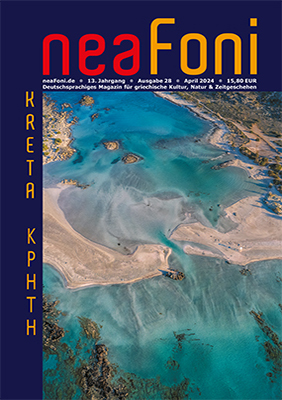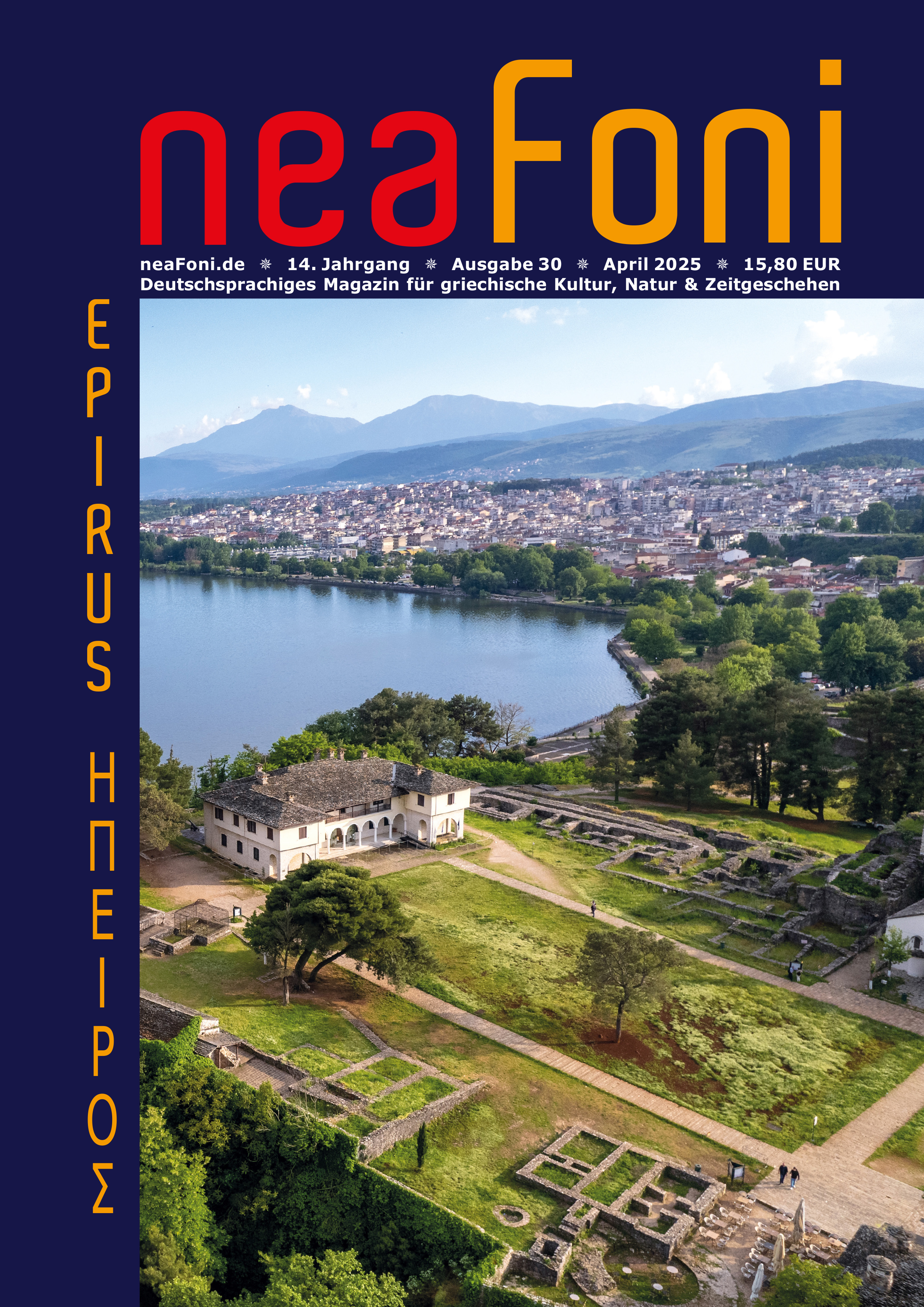In Nordgriechenland liegt am südlichen Rand der makedonischen Ebene das von Flüchtlingen aus Kleinasien 1923 gegründete Dorf Vergina. Es ist aufs engste mit dem Namen des griechischen Archäologen Professor Manolis Andronikos von der Aristoteles-Universität Thessaloniki (1919-1992) verbunden, der hier in jahrzehntelanger Forschungstätigkeit nicht nur beachtliche Grabungsergebnisse in Form eines mächtigen Grabtumulus zutage förderte, sondern zugleich den Beweis dafür erbrachte, in Vergina das alte Aigai zu sehen, das nach der Erhebung Pellas zur neuen Hauptstadt durch König Archelaos (413-399 v. Chr.) weiterhin als Grablege der makedonischen Könige wichtige Bedeutung im politischen Leben Makedoniens hatte. Seit den 1950er Jahren sind die archäologischen Überreste einer Palastanlage der Jahre um 330 v. Chr. an den Hängen des Pieria-Gebirges bekannt, ein Areal von immerhin 104,5 x 88,5 m mit einem quadratischen Innenhof, darum ein Säulenumgang gebildet war und sich unterschiedlich große, teils mit Bodenmosaiken ausgestattete Räume anschlossen. Bemerkenswert ist, dass der Palast auf seiner Ostseite zweigeschossig war und außerdem eine große Terrasse besaß, die sich zum Aliakmonas-Tal öffnete. Neben einem Theater und mehreren seit dem 19. Jh. immer wieder zutage gekommen makedonischen Gräbern - darunter zwei hellenistische Gräber mit Tempelfassaden - entdeckten die Ausgräber einen großen Grabtumulus mit einem Durchmesser von 110 m und einer Höhe von 12 m. Darin befanden sich insgesamt vier Grabanlagen, davon ein Grab stark zerstört und beraubt war, während die drei anderen Gräber intakt und mit reichlich Grabbeigaben ausgestattet waren. Das größte von ihnen ist das Grab II, die Grabstätte des makedonischen Königs Philipp II. (um 382 bis 336 v. Chr.), wie Andronikos nachweisen konnte. Der Grabbau besteht aus einer tonnengewölbten Vor- und Hauptkammer, davor eine Fassadenarchitektur erscheint mit mittig gesetzter Eingangstür und einer Fassade aus ionischen Halbsäulen innen und Pilastern außen, sowie einem darüberliegenden Metopen-Triglypenfries und einem oberen Bildfries mit einer Jagdszene, die rekonstruiert werden konnte. Im Inneren fanden sich in beiden Kammern zwei Sarkophage mit goldenen Larnakes mit dem makedonischen Stern als Emblem, darin sich der Leichenbrand eines Paares in einem golddurchwirkten Gewand befand. Die Knochenreste in der reichsten Larnax sind einem Mann um die fünfzig Jahre zuzuordnen und können nach eingehenden Untersuchungen durchaus mit Philipp II. verbunden werden. Darüber hinaus fanden sich unzählige Grabbeigaben in Form Elfenbeinschnitzeren, darunter kleine elfenbeinerne Porträtköpfe, außerdem Waffen, Silber- und Bronzegefäße und goldene Kränze in den Grabkammern. Heute ist dieser Grabtumulus museal aufbereitet und präsentiert im vorderen Teil die einzelnen Fundstücke in einem Museum und im hinteren Teil die einzelnen Gräber, sodass sich der Besucher ein gutes Bild von der einstigen Grabsituation machen kann. Seit 1996 gehören die Ausgrabungen von Vergina zum UNESCO-Weltkulturebe.
VERGINA - Weltkulturerbe der UNESCO
419 Wörter 1 Minute 1.913 × gelesen
96 Bilder für das Keyword Vergina gefunden.





